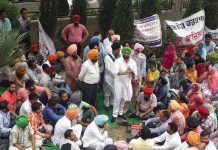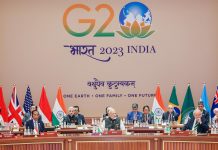
A kind of a consensus that has emerged among most economists is that while religious intolerance can lead to low growth, a high tolerance may not necessarily lead to high growth.
Growth versus intolerance
Several economists interchange the horse and cart. They contend that it is not discrimination that lowers growth, but lower growth that increases prejudices. Therefore, if a country can achieve high growth rates through its policies and ensure ‘development for all’, it can automatically create a sense of peace and harmony amongst its various communities based on caste, class, ethnicity or religion. As Daniel Bell, the author of The Cultural Contradictions of Capitalism, said, “Economic growth has become the secular religion of advancing industrial societies.”
In his paper (and book), The Moral Consequences of Economic Growth, Benjamin M Friedman said this explicitly. “Economic growth — meaning a rising standard of living for the clear majority of citizens — more often than not fosters greater opportunity, tolerance of diversity, social mobility, commitment to fairness, and dedication to democracy.” According to him, a better life for people “shapes the social, political and, ultimately, the moral character of a people.” Thus, economic growth should not be viewed merely in terms of “material considerations versus moral ones.”
Friedman went a step further when he said that even the most advanced nations, like those in the western world, make moral progress only when their economies do well and benefit the majority. “Many countries with highly developed economies, including the United States, have experienced alternating economic growth and stagnation in which their democratic values (and prejudices) have strengthened or weakened accordingly.” In effect, the quality of democracy in a nation and moral character of its society are inevitably linked to its growth rates.
For example, Friedman analysed the two decades between the mid-1970s and mid-1990s in the US. Despite low unemployment and modest growth during the period, most Americans, including the middle class, felt that they personally couldn’t get ahead and feared for their children’s future. In an American survey quoted by Friedman, more than half of the respondents agreed, “The American dream has become impossible for most people to achieve.”
“It was no coincidence that during this (above) period popular antipathy to immigrants resurfaced to an extent not known in the United States since before World War II, and in some respects not since the 1880s when intense nativism spread in response to huge immigration at a time of protracted economic distress,” said Friedman. It is again no coincidence that immigrants were targeted in the US after the Financial Crisis of 2008, which curtailed growth and employment. The recent anger against the Muslims in the US is largely due to 9/11 and can’t fit into the above assessment.
One can easily argue that if the above contention is correct, then Modi is right to stay away from the current controversies. His overriding focus on growth and development will logically stymie such discriminations if he achieves his objectives. As long as he can guide India on to a high-growth path, the right-wing ideological groups will shut up in due course. But he needs to consider the flip side. What if growth is delayed because of reasons beyond his control?
Freedom versus freedom
A few economists measured the impacts of different kinds of freedoms — economic, religious, political, and civil liberties on growth and per capita GDP (gross domestic product). One of them was a study, Religious Freedom and Economic Prosperity, by Ilan Alon and Gregory Chase. They used several regression models “to see how much of the cross-country variation in per capita GDP can be ‘explained’ by religious freedom and other freedoms. Their broad findings were along the expected lines — “higher levels of freedoms are correlated with higher levels of per capita income.”
What was surprising was their conclusion on the variations in the impact of different kinds of freedoms on per capita GDP. “Economic freedom has the highest correlation with per capita GDP, followed by civil liberties, religious freedom and political freedom. Religious freedom is most highly correlated with civil liberties, followed by political freedom.” In fact, civil liberties could explain 67 percent of the variation in extent of religious freedom in the various countries.
In simple and non-jargon terms, “The more economically free countries also produce the richest individuals, on average. The impact of economic freedom on the level of individual income seems to trump that of religious and other social and political freedoms… Therefore, the second conclusion is that economic freedom remains one of the most influential variables affecting economic prosperity. The result, of course, is intuitive because it is likely that an economic-related independent variable will best explain variations in an economic-related dependent variable.”
Alon and Chase added an important caveat. They found the correlation between religious freedom and per capita GDP as “promising”. In other words, the figures suggested that “religious freedom has a positive impact on a country’s prosperity”.
The authors’ overall emphasis was laid out in the last paragraph of their study. “History has shown that religious tolerance goes hand-in-hand with other types of freedom, including economic freedom. Our study suggests that it is in a nation’s long-run economic interest to expand not only economic freedom but also religious freedom. We must not forget, however, that ultimately those rights should not rest solely upon economic or utilitarian logic.”
One can easily argue from the above that Modi is probably wrong in keeping quiet on the growing intolerance in India. He needs to speak out and act in a tough manner. His focus on economic freedom may not yield the desired results, if he cannot curb religious and other forms of social prejudices. Asking his loyalists to counterattack the critics may encourage the violent elements. In practice, such aggression can curb economic freedom even if the policies encourage it.
At the same time, Modi must remember that India has witnessed phases when high societal intolerance was combined with high economic growth, as was the case in the early years of the post-reforms period. Religious intolerance was at a high, even as the people saw a significant jump in the quality of their lives. Economic freedom, in fact, was intrinsically coupled with religious un-freedom in the early 1990s. Babri Masjid was razed to the ground, which led to the Mumbai riots, even as reforms kicked in. Clearly, Modi needs to ensure that all kinds of freedoms are encouraged in India.
The Prime Minister must realise that the cycle of growing prejudices and lower-than-expected growth can easily snowball into a vicious circle of overall civil unrest, especially among the youth. This happened in the early 1970s, late 1980s and in the past few years. And that can be debilitating for the economic health of the nation given the existing demographics and huge material aspirations among the younger population.
The youth excitedly voted for Modi in the 2014 general election; it expects expect the moon from him. It yearns for more, more and more.
editor@tehelka.com












